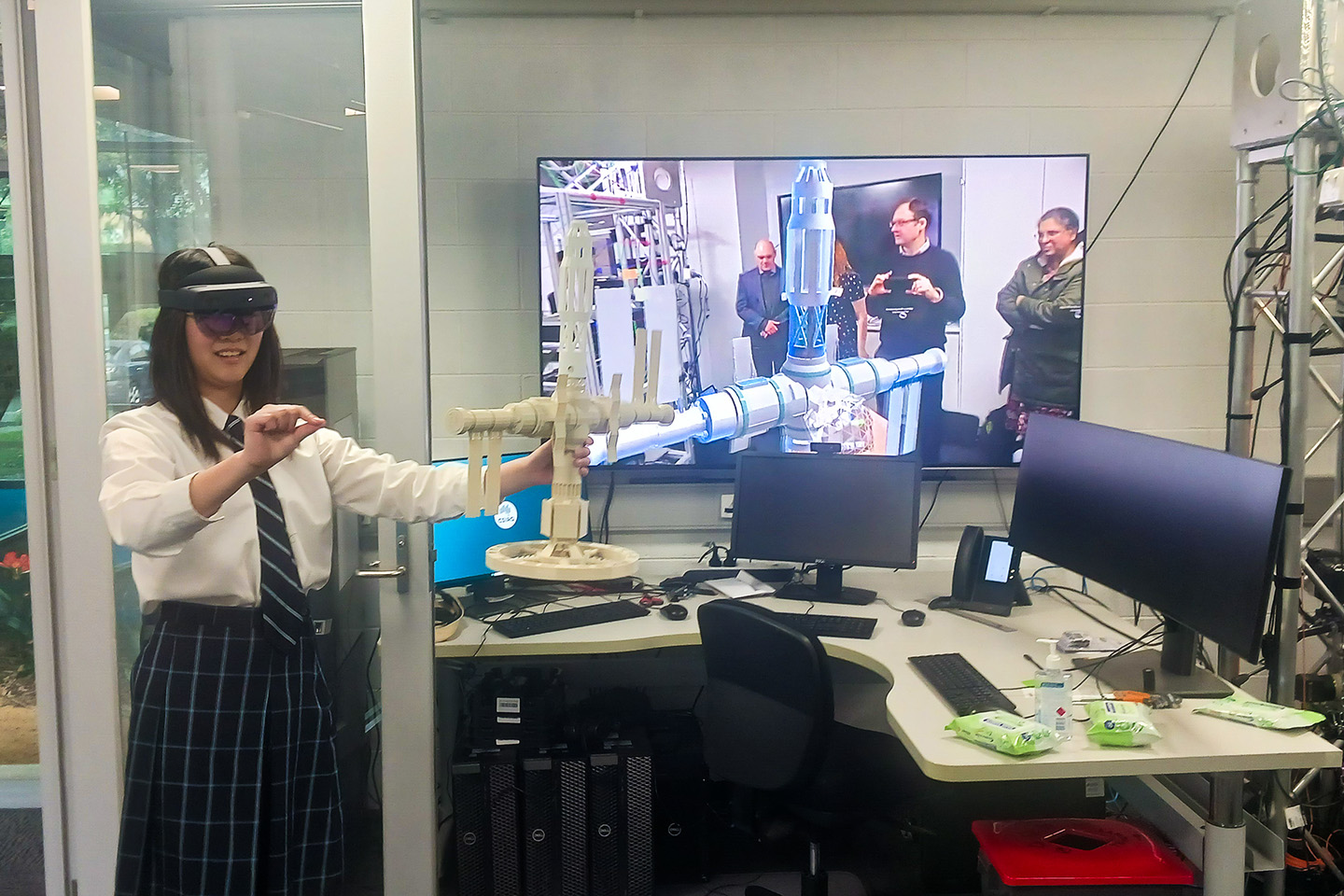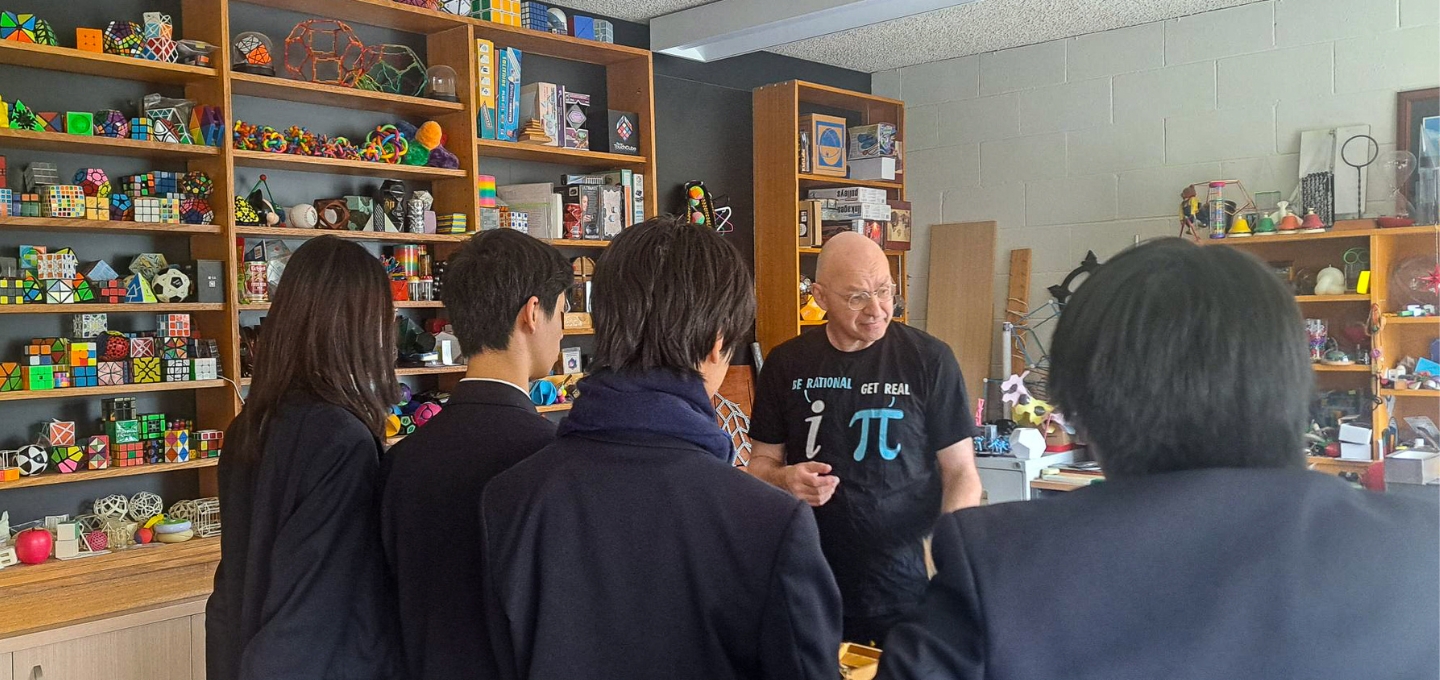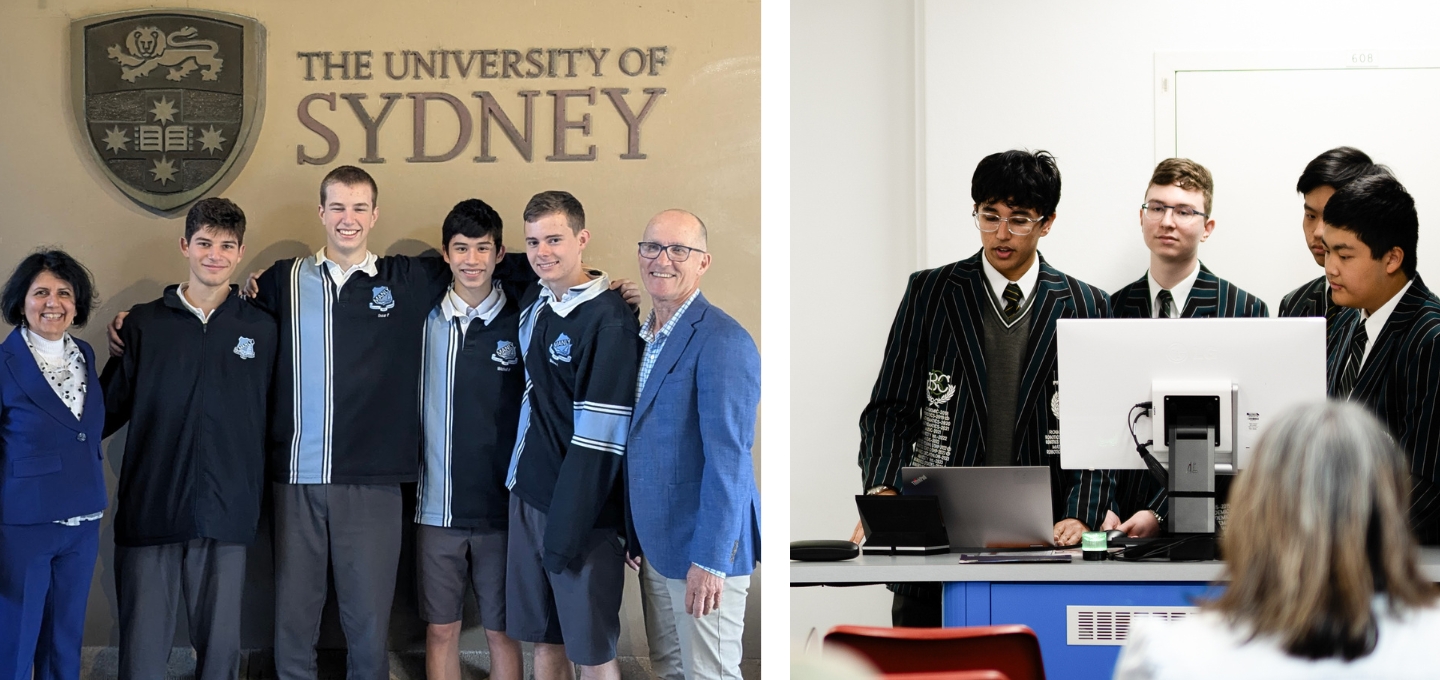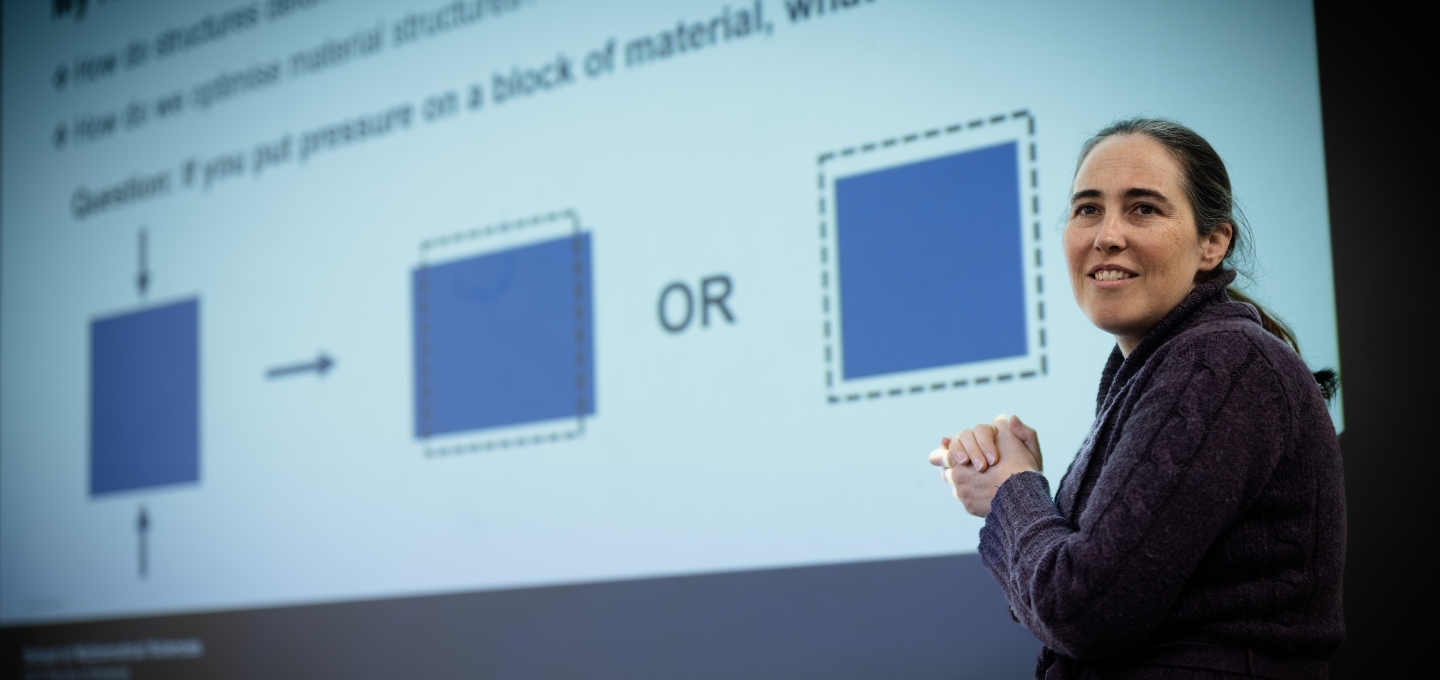
From theory to reality: students witness the next level of problem solving
ACER news 16 Sep 2024 6 minute readExperts advancing solutions for real world problems have been sharing their knowledge with Australia’s teenage top scorers in the International Mathematical Modeling Challenge (IM2C).
Jill, 16, holds a basic model of a space station in front of her. Her other hand is moving through the air, constructing a virtual model that appears simultaneously behind her on a screen.
Four year 11 students from Melbourne’s John Monash Science School are experiencing the speed technology brings to visualising ideas through the Augmented Reality Lab at CSIRO’s Data 61 Institute.
Joel, 17, is intrigued by what he is being shown and encouraged to consider, including applications for space, the human body, water, and industry.
‘They showed us monitoring technology and a motion capture set up and how it can be used for factory workers and measuring stresses on their backs,’ Joel explains later. ‘I thought it was an interesting solution for keeping workers safe.’
The students, who attend a specialist senior secondary college that fosters science and maths learning, also learnt from long-time maths enthusiast Professor Burkard Polster during their visit to Monash University.

In what can only be described as a mathematician’s toy room, Professor Polster spoke of the beauty of maths – sharing how it presents in pineapples and how mirrors can be placed to reveal a true reflection. He also used multiple props to demonstrate the structure of things like carbon nanotubes, Fibonacci numbers, spirals and helices.
Partnerships extend the learning
The joint CSIRO and university visit is one of several that have occurred across the country, with select teams of secondary students experiencing tailored presentations and hands-on learning from experts in mathematical modelling and problem solving.
The Australian Council for Educational Research (ACER) developed the university partnerships to extend the learning experience of Australian students who performed well at the state, national and international levels of the International Mathematical Modeling Challenge (IM2C).
Mathematical modelling aims to describe, explain and predict the behaviour of complex systems to resolve real-world problems.
It involves identifying variables, choosing ways to represent data that highlight relationships and patterns and working mathematically to produce a model.
A successful model, which might be an equation, graph or computer program, can be used to simulate a situation and forecast outcomes, providing useful information to policymakers.
As an example of its application, a Monash researcher is set to investigate new modelling that could improve Australia’s ability to reach net zero carbon emissions, considering technologies, lifestyle solutions and the drivers and barriers to achieving that goal.
How students benefit from IM2C
In previous years, IM2C teams have designed models for a variety of problems, such as finding the best hospital for particular medical needs, and the most efficient way to board planes. Entrants are judged on many skills, including their creativity and choice of variables and assumptions to test, as well as their ability to communicate their solutions.
Asked what he loves about the challenge, Joel’s answer reveals another useful trait linked to achievement in maths, with curiosity helping him think outside the square.
‘My favourite part is taking the numbers out and exploring relationships between any given thing,’ Joel says. ‘It makes them [models] more flexible … and then the process is able to explain a lot of what happens in the real world and I find that interesting.’
Entrants in the 2024 IM2C were asked to respond to the issue of pet abandonment that followed COVID-19, by determining which households would be prepared to own a pet and forecasting pet ownership.
Two Australian teams – from Northern Beaches Secondary College Manly Campus and Brisbane Boys’ College – were recognised internationally in the prestigious ‘meritorious’ category.
As well as an IM2C summit and awards presentation in Hong Kong in August, they have enjoyed unique tours and expert presentations at Sydney University (left below) and Queensland University of Technology (QUT), (where they also got to present as pictured right below) respectively.


Dr Vivien Challis presents her work to the Brisbane Boys' College team at Queensland University of Technology. Image courtesy of QUT.
The John Monash Science School team visited Monash University and CSIRO Clayton as Victorian winners of the IM2C, with Jill noting wave behaviour and a pumping heart as her favourite examples of the modelling demonstrated.
She says the visit changed her view of what her studies might lead to.
‘After today I have a different understanding of how doing maths can lead to other pathways like medicine, biology, physics and science,’ she says. ‘Before that I thought it was restricted to a single pathway.’
Learn more
ACER coordinates the national IM²C with the support of an expert advisory group. Find out more about this annual challenge and download the guide for teachers and students on ACER’s IM2C page.
